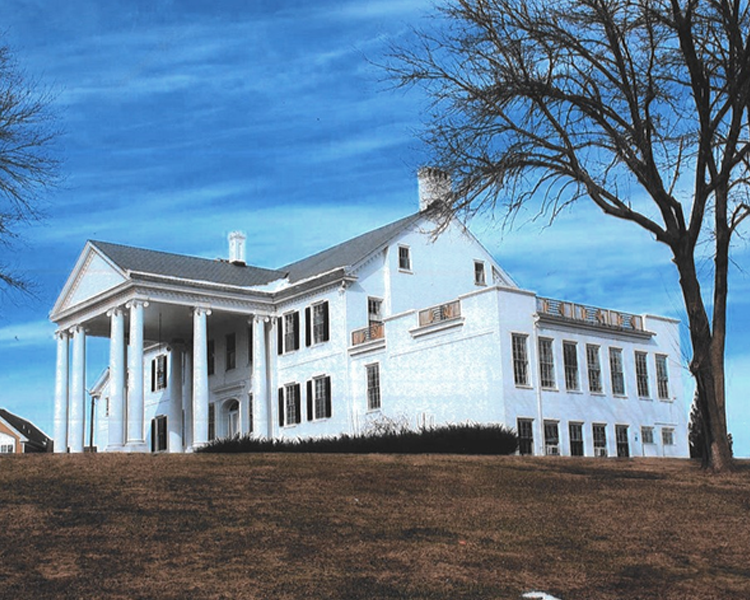The Hogan administration today announced the Maryland Historical Trust (MHT), a division of the Maryland Department of Planning, has awarded 16 projects more than $19 million in revitalization tax credits, leveraging more than $92 million in additional investment.
“The Historic Revitalization Tax Credit awards will breathe new life into our communities and towns,” said Governor Larry Hogan. “These awards will allow for refurbishments to revitalize sites in local communities across the state and serve as an effective investment tool for strengthening Maryland’s local economies and redevelopment across Maryland.”
More from the Maryland Department of Planning’s November 1st press release
The Historic Revitalization Tax Credit, administered by MHT, has invested more than $465 million in Maryland rehabilitation projects since 1996. The investments have helped make improvements to 5,331 homeowner and 825 commercial historic structures, preserving buildings that contribute to the distinct character of Maryland’s towns, cities, and rural areas. According to a study by the Abell Foundation, the state program has helped to create an estimated 33,700 jobs through construction, and new or expanded occupation of these significant historic resources.
“It is an honor to be part of these awards that serve historic revitalization and play an integral part in advancing economic development,” said Planning Secretary Rob McCord. “The preservation of these historic sites enhances our state’s history and encourages projects that support the enjoyment of our state’s history, culture, and scenic beauty.”
Twenty-four applicants had sought $39.3 million in tax credits for construction projects totaling more than $210 million in estimated costs. The 16 projects selected for the 2023 tax credits were based on an established set of criteria, including those outlined by the U.S. Secretary of the Interior for historic building rehabilitations.
The 16 award winners (listed alphabetically by county and Baltimore City) are:
-
The McMullen Building – 138 Baltimore Street, Cumberland, Allegany County
-
Heinz’s Riverside Abattoir – 1900 Light Street, Baltimore City
-
The Fidelity Building – 200-210 North Charles Street, Baltimore City
-
The Ford Building – 1420 West Baltimore Street, Baltimore City
-
The Markley Building – 4511 Harford Road, Baltimore City
-
Upton Mansion – 811 West Lanvale Street, Baltimore City
-
Glen Arm Station – 5205 Glen Arm Road, Glen Arm, Baltimore County
-
Groff’s Mill – 10601 Reisterstown Road, Owings Mills, Baltimore County
-
Long Green Farm Barn – 12820 Long Green Pike, Hydes, Baltimore County
-
Plinlimmon Farm – 9401 Lyons Mill Road, Owings Mills, Baltimore County
-
F. W. Woolworth Company Building – 420-422 Race Street, Cambridge, Dorchester County
-
Prospect Hall – 889 Butterfly Lane, Frederick, Frederick County
-
11 North Main Street – Berlin, Worcester County
-
15-19 North Main Street – Berlin, Worcester County
-
Pocomoke Firehouse – 5 Fifth Street, Pocomoke, Worcester County
-
Powell Building – 7 North Main Street, Berlin, Worcester County
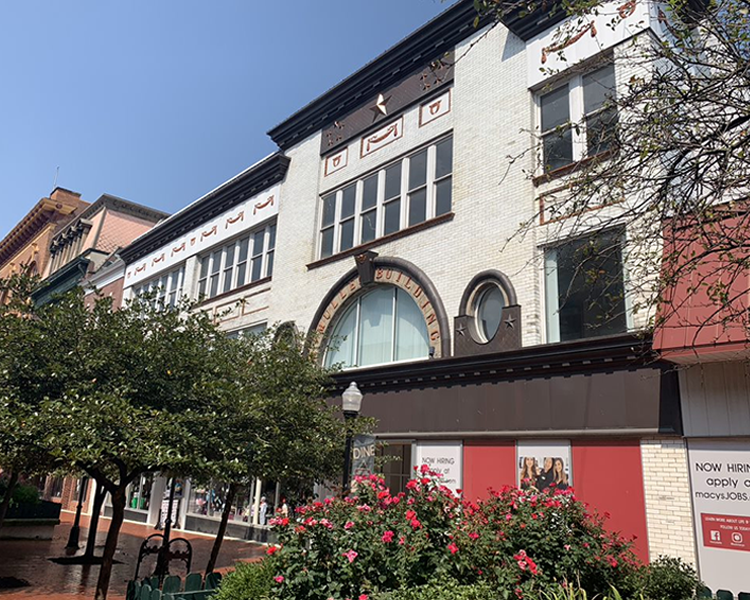
The McMullen Building – Baltimore Street, Allegany County
$464,138.60 in Tax Credits Awarded
Estimated Total Cost – $2.3 Million
The McMullen Building stands prominently on Baltimore Street in downtown Cumberland and was a main street landmark as soon as it opened as the city’s first department store in 1896. It stands four stories tall and is clad in white glazed bricks locally produced by the Mount Savage Enameled Brick Company. The rehabilitation project will allow for the continued use of first- and second-floor commercial office spaces and create additional residential apartment units on the third and fourth floors.
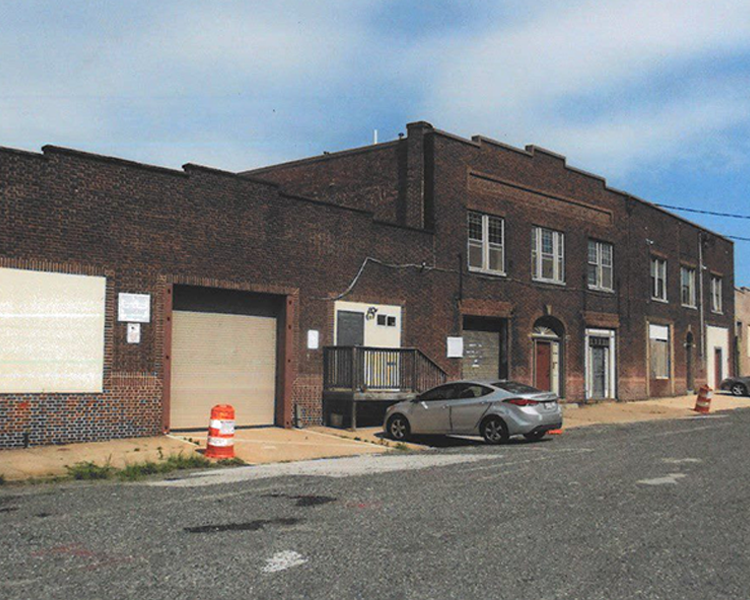
Heinz Riverside Abattoir – Light Street, Baltimore City
$181,287.29 in Tax Credits Awarded
Estimated Total Cost – $8.3 Million
The interconnected buildings which comprise the Heinz Riverside Abattoir, was one of the largest slaughterhouses and wholesale meat packing facilities in Baltimore City. Constructed in 1929, these four brick structures functioned as a stock pen, slaughterhouse, meat processing, and cold storage facility through 1975. The structures stylistically exhibit Colonial Revival detailing, decorative patterned brickwork, and shaped parapets. The project will transform the historic complex into a mixed-use commercial hub with a food hall and market on the first floor and second floor office space.

The Fidelity Building – North Charles Street, Baltimore City
$5,000,000 in Tax Credits Awarded
Estimated Total Cost – $45 Million
The Fidelity Building, a Romanesque Revival tower, was built as an eight-story structure in 1894 and enlarged between 1912 and 1915 to fifteen stories. Designed by the prominent local architectural firm of Baldwin & Pennington, it was the headquarters of the Fidelity and Deposit Company of Baltimore and was one of the few downtown structures that survived the Great Fire of 1904. The rehabilitation project will convert the high rise building into a mixed use with commercial spaces on the lower levels and residential units on the upper levels.

The Ford Building – West Baltimore Street, Baltimore City
$2,100,000 in Tax Credits Awarded
Estimated Total Cost – $10.5 Million
The Ford Building is an amalgamation of several connected row houses and warehouses at the edge of Baltimore’s Union Square-Hollins Market Historic District. It was constructed in the last quarter of the nineteenth century and experienced many modifications over time to reach its current configuration with Italianate style detailing and large storefront windows. The building will become a mixed-use live-work art center with first-floor retail spaces and upper-level residential units, offering workers, entrepreneurs, and artists a home and workspaces all under one roof.
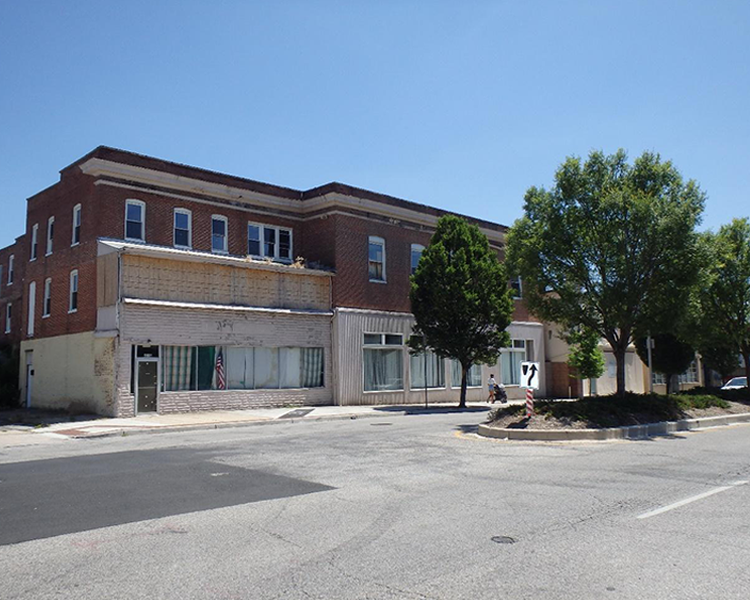
The Markley Building – Harford Road, Baltimore City
$2,500,000 in Tax Credits Awarded
Estimated Total Cost – $10 Million
The former Markley Store was built in 1912 as the second-generation facility for the D. Markley Supply Co. and included a store, warehouse, and residences for the Markley family. The southern portion of the building took in materials and produce from local farmers for redistribution and sale in their adjacent store to the north. It provided both a convenient grocery and general merchandise store through the 1950’s, developing and transitioning in tandem with the Hamilton-Lauraville Main Street community. Currently vacant, the building will have new life as a mix of retail and office space for locally-owned shops, artisans, and eateries.

Upton Mansion – West Lanvale Street, Baltimore City
$1,800,000 in Tax Credits Awarded
Estimated Total Cost – $7.2 Million
Constructed in 1838, the Upton Mansion is a rare surviving example of a 19th century Greek Revival purpose-built country house within Baltimore City. The one-acre site also has a brick carriage house which is contemporary with the mansion. Although the building has been subjected to numerous changes of use in the 20th century, including a radio station, an African-American music school, and part of the city school system, it has retained substantial integrity. The majority of its highly refined interior and exterior decorative detailing remains intact, and its floor plan has been altered only slightly. The intent of the project is to preserve and restore the mansion to be used by Afro Charities as a permanent home and research center for the AFRO American Newspaper Archives. A two-story annex will be constructed on the south side of the site as additional support space.

Glen Arm Station – Glen Arm Road, Baltimore County
$182,464 in Tax Credits Awarded
Estimated Total Cost – $912,320
Located within the Long Green Valley Historic District, Glen Arm Station is a rare surviving example of a rural train station with late Victorian style details such as wooden shingles and large eave overhangs with decorative brackets. The location of the c. 1909 station is also associated with the first American train-actuated crossing signal. It will be rehabilitated into a coffee shop, serving as a community anchor to the Long Green Valley.
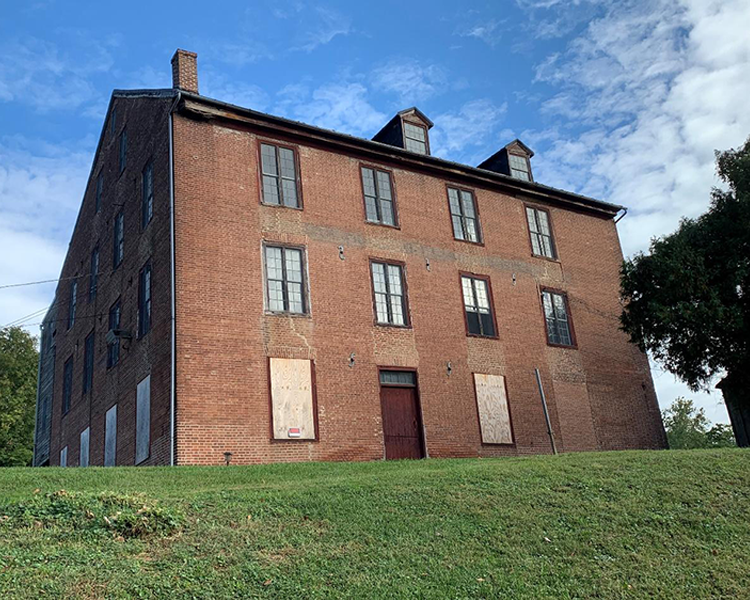
Groff’s Mill – Reisterstown Road, Baltimore County
$220,000 in Tax Credits Awarded
Estimated Total Cost – $1.1 Million
Groff’s Mill, otherwise known as Owings Upper Mill, constructed circa 1798, is likely the oldest and largest mill surviving in Baltimore County. It is the last known project of Samuel Owings, the Revolutionary patriot and enterprising merchant. The mill is a large brick structure, 50 x 60 feet and 3 ½ stories high. As originally constructed, the mill was a brick rectangle with a brick central pavilion 18 feet wide projecting nine feet from the north façade; the pavilion was designed to house loading doors at each floor. Sometime in the 1880s, two frame extensions were built flush with the gable end of the central pavilion. The mill is part of a nine-acre complex that consists of the mill, a late 19th century three-story brick residence, and several outbuildings. The project entails exterior and interior rehabilitation of the mill and brick residence to convert the buildings into event and office space.

Long Green Farm Barn – Long Green Pike, Baltimore County
$400,000 in Tax Credits Awarded
Estimated Total Cost – $2 Million
The Long Green Farm Barn was built ca. 1830-1840 as part of a large rural farm complex in the Long Green Valley. Now part of Boordy Vineyards, it serves as the tasting barn while also housing retail and other vineyard operations. This rehabilitation project will allow for its continued and improved use as the Boordy Tasting Barn by adding insulation, climate control systems, accessibility measures, and a sensitively designed addition.
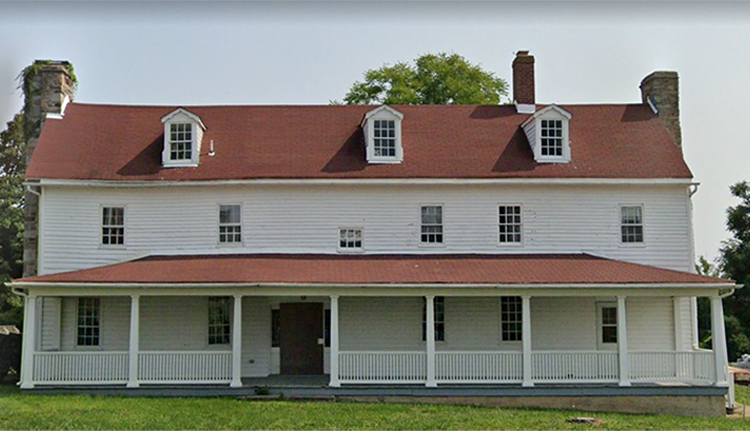
Plinlimmon Farm – Lyons Mill Road, Baltimore County
$112,000 in Tax Credits Awarded
Estimated Total Cost – $560,000
Plinlimmon Farm consists of an early 19th century vernacular farmhouse and outbuildings located in Owings Mills. The main farmhouse is made of log construction atop a stone foundation and clad in novelty siding underneath a side gable roof with irregularly spaced window openings. A smokehouse and stone outhouse are also present on the property. While no longer a working farm, the main farmhouse and a selection of outbuildings will be rehabilitated to accommodate office spaces.
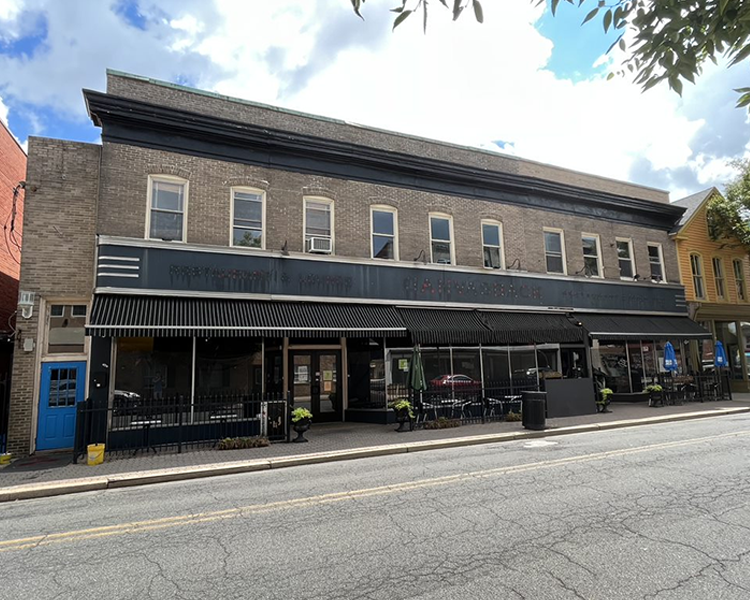
F.W. Woolworth Company Building – Race Street, Dorchester County
$4,537,500 in Tax Credits Awarded
Estimated Total Cost – $16.5 Million
The F.W. Woolworth Company Building sits on the eastern side of Race Street in the commercial core of Cambridge. It was constructed in two parts in 1919 and 1930 and has a Streamline Moderne style storefront that spans the entirety of the first floor. Historically, the ground floor housed commercial and retail operations while the second floor was used for office and storage spaces. The building will be rehabilitated to accommodate retail and restaurant spaces on the ground floor and residential units on the second floor.

Prospect Hall – Butterfly Lane, Frederick County
$600,000 in Tax Credits Awarded
Estimated Total Cost – $3 Million
Prospect Hall is a large, elegant hilltop two and a half story Greek Revival mansion with a seven-bay brick central block and added dependencies on each end. Extending from the front of the house is an imposing two and a half story pedimented portico supported by concrete-coated, round, brick columns with Roman Ionic capitals. Built during the early 19th century with subsequent additions and alterations, the mansion is atypical for its period and location due to its grand proportions and design. While minorly altered for its use as a school in the 1950’s, the original central portion retains a high degree of its formal historic layouts, features, and finishes, retaining its grand central hall with four adjacent rooms, including two formal parlors, a dining room, and decorative stair hall intact. The core rooms of the second floor remain intact and are oriented around a long central hallway, with two arched openings leading from the decorative stair hall to the central hall. The attic, finished in the late 19th century, still retains its historic partitions and finishes. The project will involve an exterior and interior rehabilitation with associated site improvements to transform the property into an event venue.

11 North Main Street, Worcester County
$292,028 in Tax Credits Awarded
Estimated Total Cost – $1.1 Million
Like its neighbor, 11 North Main Street is a two-story commercial building with similar construction material and degree of ornamentation, elements common to the buildings which comprise the Berlin Commercial historic district and which contribute to continuity of the streetscape forming the “Main Street” commercial avenue. In addition to commercial space, like the adjacent 15-19 North Main, the rehabilitation of this building will include multiple apartments on the 2nd floor, bringing residents to the central business block and adding to its vitality. It also involves reinstating the historic awning that spans the width of the building.
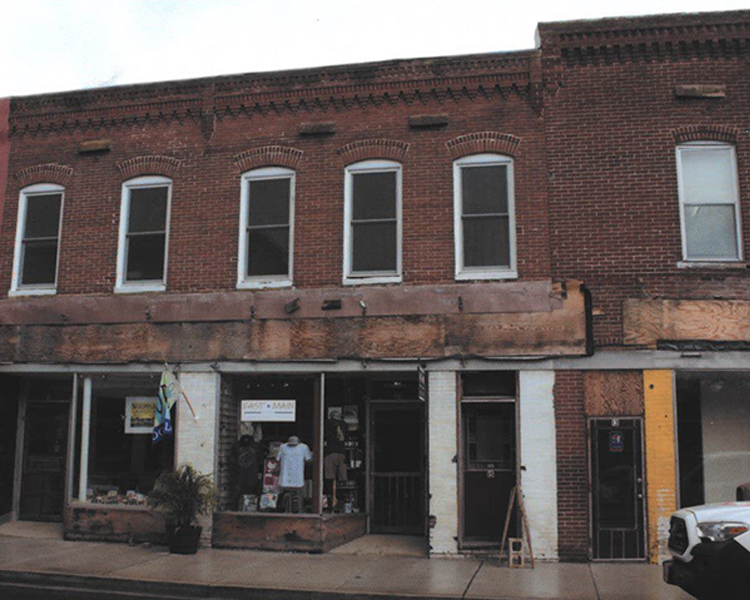
15-19 North Main Street – Worcester County
$103,192.50 in Tax Credits Awarded
Estimated Total Cost – $412,770
Located on Main Street in downtown Berlin, this two-story commercial brick building is characteristic of the late 19th, early 20th century commercial structures that were built following the 1895 fire that leveled the central commercial downtown. Fairly simple in its design, it represents the typical small-scaled commercial architecture found in downtown Berlin, with a decorative brick cornice in a sawtooth pattern as its distinguishing feature. The rehabilitation of this currently vacant and underused structure will contribute to the Berlin Main Street community with residential and commercial spaces.

Pocomoke Firehouse – Fifth Street, Worcester County
$257,925.80 in Tax Credits Awarded
Estimated Total Cost – $1.2 Million
Constructed in 1939, the Pocomoke Firehouse is a large two-story brick structure with a main central block, front and rear wings, and a rear addition constructed in 1955. Unique to its design are the tall arched side windows and the inclusion of a large, vaulted meeting room, dining hall, and kitchen on the second floor. The building acted as both a firehouse and a center for social life in Pocomoke from 1939 until 2008 when the fire company outgrew the space and relocated. The firehouse will become mixed use with commercial space on the first floor and housing on the second floor.
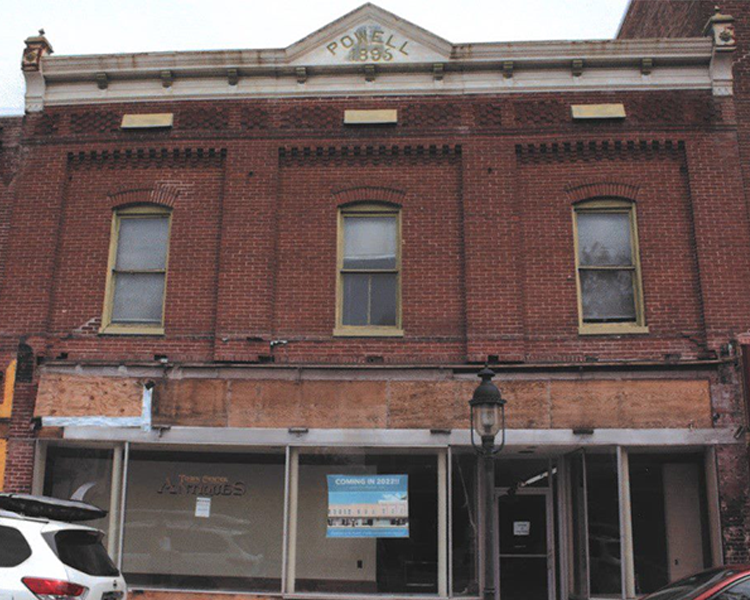
Powell Building – North Main Street, Worcester County
$364,498.25 in Tax Credits Awarded
Estimated Total Cost – $1.4 Million
The final structure associated with the revitalization of the Berlin Main Street is the Powell Building, located adjacent to 11 North Main Street. As with 15-19 and 11 North Main, it is a two-story brick commercial building with elements common to most of the commercial buildings along main street. What distinguishes it from its neighbors is its Victorian decorative elements, including its pedimented and bracketed stamped metal cornice with egg and dart molding and capped urns at the ends, which are retained by only a select few of Berlin’s historic storefronts. As with the neighboring buildings, the rehabilitation of the Powell Building will contribute to the overall efforts of the main street redevelopment program by adding new business locations on the street as well as housing.

